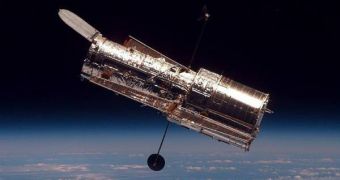Experts handling the operation of the Hubble Space Telescope have managed to calibrate the observatory in such a manner that its sensitivity has been artificially boosted from the Earth. In other words, the scientists have succeeded in making something more out of the existing systems, rather than installing new ones, although the latter are on their way to the telescope even now. Rochester Institute of Technology Chester F. Carlson Center for Imaging Science associate research scientist Dan Batcheldor has led the team that has made the modifications to the Near-Infrared Camera and the Multi-Object Spectrometer.
Their intervention has facilitated the use of an observational technique known as high-precision polarimetry, which is regularly used by astronomers to identify scattered light emitted by active galactic nuclei and early planets forming around their still very young stars. The Space Telescope Science Institute has funded the new work, whose details are published in the February issue of the journal Publications of the Astronomical Society of the Pacific.
“Polarimetry is really quite a powerful tool in astronomy because it can essentially see around corners by the way light is reflecting. When you do polarimetry, what you are essentially looking through is a set of polaroid sunglasses. What a polaroid does is it makes you see only light aligned in a certain way,” Batcheldor explains. “Most of the light that comes from an object is unpolarized. And you've got to filter out all that light just to see polarized light itself. And so now Hubble can do this even if only one percent of the light is polarized,” he adds.
“We've been able to take an existing camera and carefully plan some observations, which have allowed us to enable a new type of science to be done without having to go up to the telescope to put a new instrument in. So for a very small cost, we've been able to expand the science that the Hubble Space Telescope can do,” Batcheldor also points out.
The boost comes shortly before the STS-125 mission to the Hubble, planned for late April or early May. The Atlantis space shuttle will then add two new instruments to the observatory, and will also repair two broken ones. This would be the last mission to the telescope that is regarded by some as the best one to have ever been constructed.

 14 DAY TRIAL //
14 DAY TRIAL //